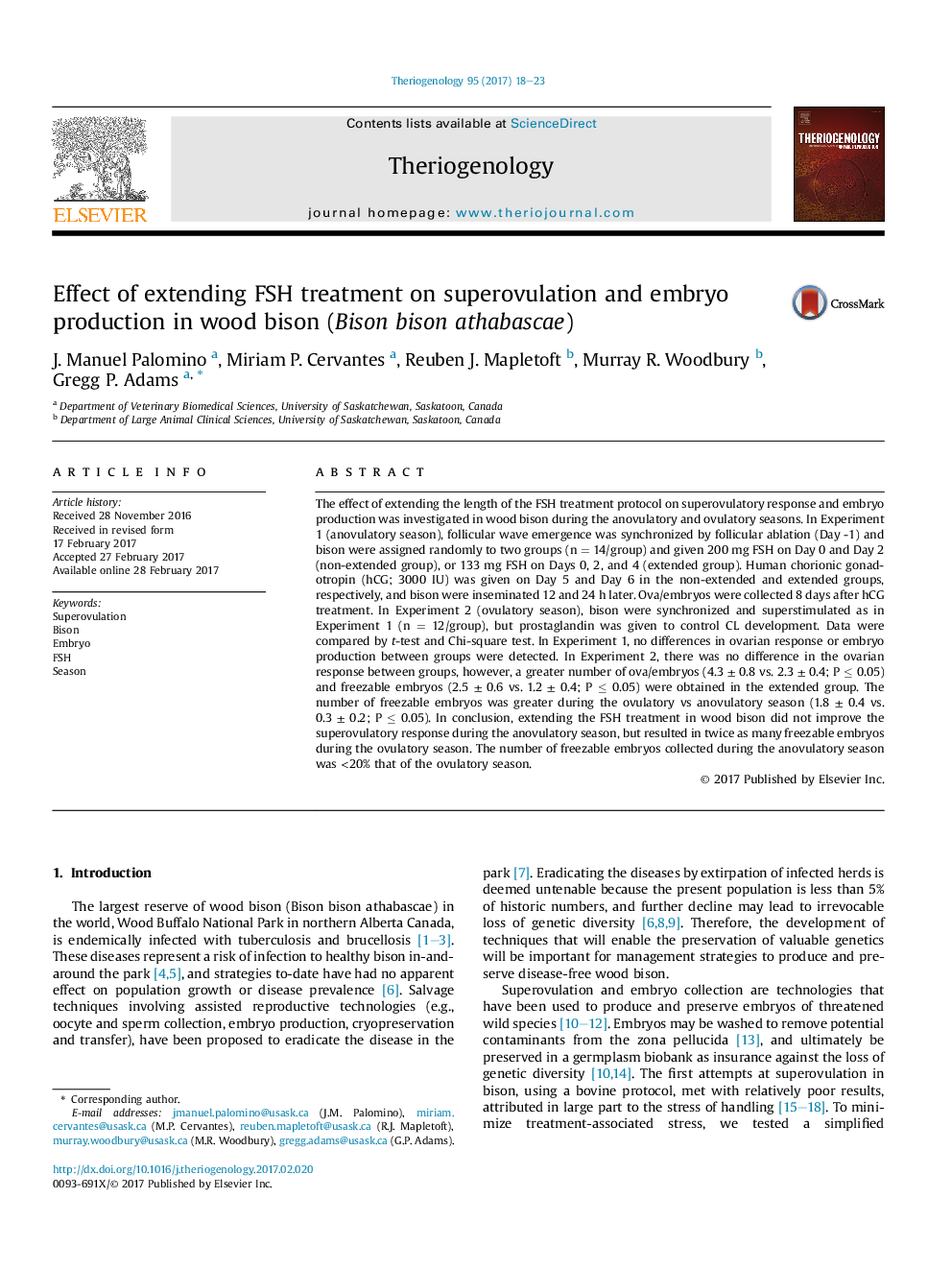| کد مقاله | کد نشریه | سال انتشار | مقاله انگلیسی | نسخه تمام متن |
|---|---|---|---|---|
| 5523367 | 1546074 | 2017 | 6 صفحه PDF | دانلود رایگان |

- A greater number of freezable embryos (grades 1 and 2) were collected following the use of an extended FSH treatment protocol during the ovulatory season.
- There was no effect of the extended FSH protocol during the anovulatory season.
- The reason for suppressed ovulatory and oocyte competence during the anovulatory season in bison warrant further study.
The effect of extending the length of the FSH treatment protocol on superovulatory response and embryo production was investigated in wood bison during the anovulatory and ovulatory seasons. In Experiment 1 (anovulatory season), follicular wave emergence was synchronized by follicular ablation (Day -1) and bison were assigned randomly to two groups (n = 14/group) and given 200 mg FSH on Day 0 and Day 2 (non-extended group), or 133 mg FSH on Days 0, 2, and 4 (extended group). Human chorionic gonadotropin (hCG; 3000 IU) was given on Day 5 and Day 6 in the non-extended and extended groups, respectively, and bison were inseminated 12 and 24 h later. Ova/embryos were collected 8 days after hCG treatment. In Experiment 2 (ovulatory season), bison were synchronized and superstimulated as in Experiment 1 (n = 12/group), but prostaglandin was given to control CL development. Data were compared by t-test and Chi-square test. In Experiment 1, no differences in ovarian response or embryo production between groups were detected. In Experiment 2, there was no difference in the ovarian response between groups, however, a greater number of ova/embryos (4.3 ± 0.8 vs. 2.3 ± 0.4; P â¤Â 0.05) and freezable embryos (2.5 ± 0.6 vs. 1.2 ± 0.4; P â¤Â 0.05) were obtained in the extended group. The number of freezable embryos was greater during the ovulatory vs anovulatory season (1.8 ± 0.4 vs. 0.3 ± 0.2; P â¤Â 0.05). In conclusion, extending the FSH treatment in wood bison did not improve the superovulatory response during the anovulatory season, but resulted in twice as many freezable embryos during the ovulatory season. The number of freezable embryos collected during the anovulatory season was <20% that of the ovulatory season.
Journal: Theriogenology - Volume 95, June 2017, Pages 18-23